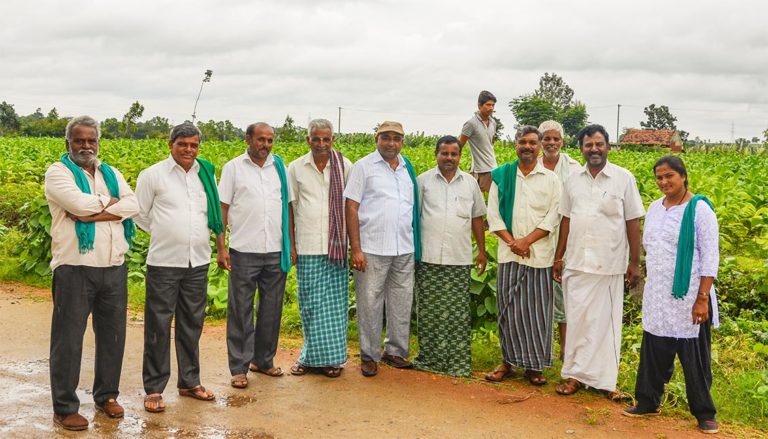Empower to Inspire
How Small Acts Can Ignite a Empowerment Movement
Overview
Since 1991, IHDUA has been partnering with rural Indian communities to achieve a wide range of substantive grassroots development goals. We are now joining forces with HealthCare Global, Asia’s largest cancer care hospital network, to help Indian tobacco farmers make the switch to people-friendly crops. Beginning in May 2019, we are enlisting the expertise of agronomists, ecologists, economists and health experts to guide 50 tobacco farmers on the path to adopting alternative crops that are healthy for humans, healthy for the environment, and healthy for farmers’ pocketbooks.
As part of this project, we are producing a documentary film that will be used to spread awareness among Indian tobacco farmers about the alternative crops available to them, and to destroy the notion that tobacco is the only crop they can grow. At the same time, we will share the finished film with the general public in order to shed light on this complex topic.
Following completion of the documentary, we will enter the film into Indian and international film festivals, after which we will seek a major distribution channel through which the film can be easily accessed by a global audience.
Tobacco's Heavy Toll on India
More than 1.3 million people die of tobacco use every year in India. The country, which is the second largest consumer of tobacco in the world, accounts for almost half of all oral cancers, and also has a high incidence of associated respiratory and cardiovascular diseases. If current trends continue, tobacco will account for 13% of all deaths in India by 2020.
India is also the third largest producer of tobacco in the world, with the states of Karnataka, Andhra Pradesh, Gujarat and Uttar Pradesh accounting for almost 80% of total production. For this reason, tobacco remains the single most widely available addictive substance, and can be easily purchased anywhere.
There is a steep cost to growing so much tobacco: in Karnataka alone more than 700,000 tons of firewood are consumed annually to cure raw tobacco leaves. Some of this wood is extracted directly from delicate rainforest habitats.
Today, more than 28% of Indians regularly consume some form of tobacco. If we are to reduce this figure, tobacco farmers themselves must be included in the solution.
Finding Viable Alternatives for Tobacco Growers
Many Indian tobacco farmers understand that tobacco use causes substantial harm to human health, and they struggle with the moral dilemma of bringing such a crop to market. However, economic necessity, institutional encouragement and tradition have made it extremely difficult for them to shift away from growing tobacco. In spite of this, our research has found that many tobacco farmers in Karnataka are ready to adopt proven alternative crops.
To that end, IHDUA is working with a cohort of 50 farmers to make the switch from tobacco to crops that are people-friendly, environmentally sustainable and economically viable.
Tobacco-farming families from Hunsur, in the heart of Karnataka’s tobacco-growing region, have each committed one acre of farmland—some 25% of their land holdings—for growing non-tobacco cash crops. Together, we will identify viable alternatives that provide earning parity or even superior returns over tobacco. We will then track their progress from planting to harvest. During the course of this project we plan to identify one or more models for phasing out tobacco cultivation that can be replicated by farmers elsewhere.
We are joining forces with agronomists, ecologists, medical practitioners and other relevant experts to guide decision-making at every step of the process. At the same time, we will explore the phenomenon of tobacco cultivation in India from a holistic perspective in order to fully understand its impact on farmers, the environment and society.
Fundraising Goal
Our fundraising goal is directly tied to the expenses we are incurring during the filming and upcoming post-production phase of this project.
- Travel funds: INR 4,00,000 (includes transportation of the team and three trunks of video equipment for an estimated 40 additional location shoots)
- Storage media: INR 3,00,000 (provides adequate storage for 40 full days of filming and duplicate backup storage; this media will be available for future projects)
- Post-production: INR 8,00,000 (includes professional editing, color grading of footage, titling and scoring, amounting to approximately 2 months of dedicated labor by post-production specialists)
Total goal: INR 15,00,000

